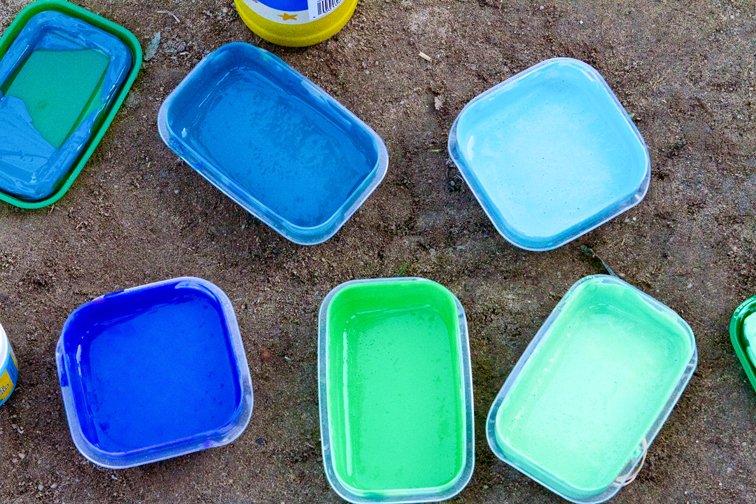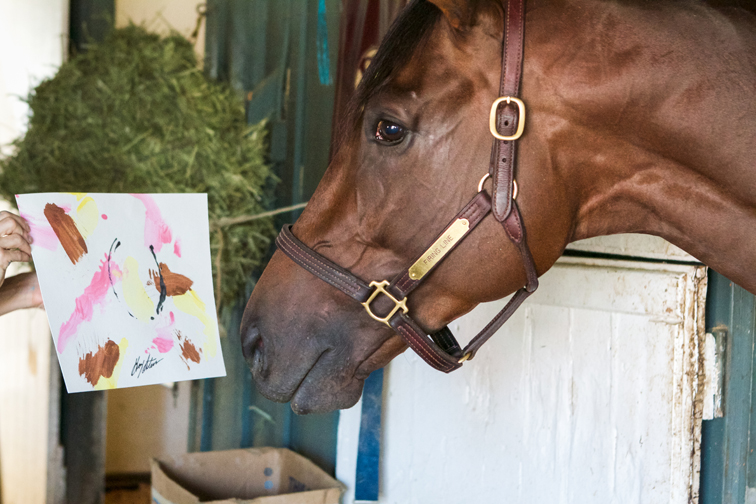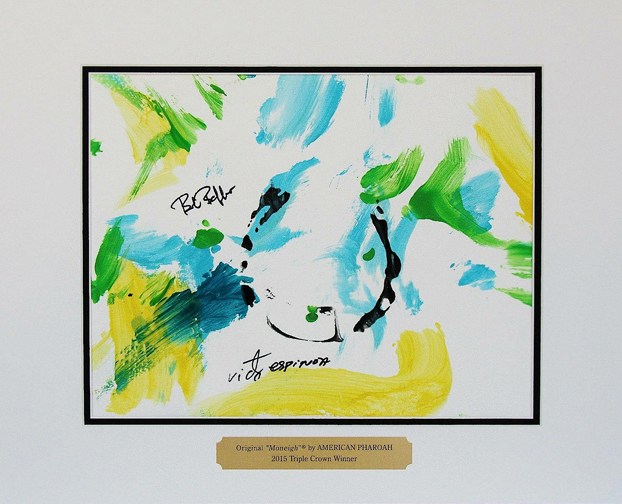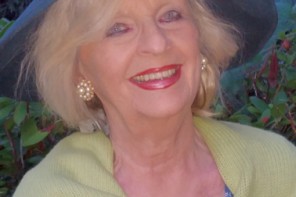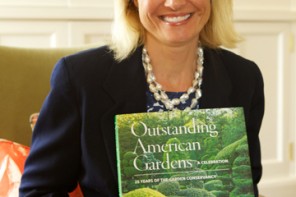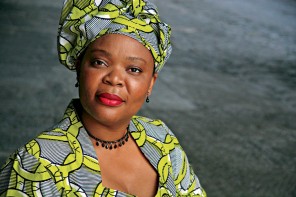At first glance, they look like Abstract Expressionist paintings — all bright colors and bold shapes. But they’re actually more paddock than Pollock.
They’re called Moneighs — paintings on paper by many of the top racehorses of our time — to help their less fortunate retired brothers and sisters with a different three Rs, rescue, rehab and retraining for new careers.
The woman who assists these special four-legged artistes — including American Pharoah, whose Moneigh recently sold for $7,104 on eBay — has strong Connecticut roots. Dawn Mellen grew up in Trumbull and Shelton and her family still owns Town Fair Tire Centers throughout Connecticut. These days, though, Mellen is a Southern California horse owner and founding president of After the Finish Line, which funds organizations that help retired racehorses. (It’s one of two Moneigh beneficiaries, the other being ReRun Thoroughbred Adoption.) She’s also, for the last 10 years, the “artists’” assistant.
“I help the horses put their expression on paper,” says the woman who knows “the backside.” And by that we don’t mean the rear end of the horse (though maybe that, too.) Mellen knows the behind-the-scenes world TV racing fans don’t necessarily see. She speaks the language of jockeys, grooms and trainers, which is no doubt why they’re comfortable trusting her with a California Chrome or a Zenyatta. She in turn is grateful to teams like that of American Pharoah — owner Ahmed Zayat, trainer Bob Baffert, assistant trainer Jimmy Barnes, jockey Victor Espinoza — who were happy to saddle up for charity.
“Saddle up” may be the wrong choice of words here. Mellen says she doesn’t visit her artists in their workplace, the racetrack, but rather at home, in their stalls. And just as not every human is crazy about arts and crafts, the more than 200 racehorses that have participated, including Cigar and Stormcat, have varying attitudes toward painting.
“Each one is different,” Mellen says. “Some horses just go to town. They try to nibble and lick the paper. Their ears are pricked.”
Mellen lets the horse get comfortable with the paper and sniff the children’s nontoxic, water-based paints. With the groom standing by, she then applies paint in the colors of the horse’s silks to his or her chin.
“I like it when it gets into the horse’s whiskers, because it makes a feathery line.”
Mellen holds the paper under the horse’s chin — vertically or horizontally — and as he moves, he makes an abstract design. (So far, none of the horses have gone in for Photorealism.) Black paint is then applied with a sponge to one of the horse’s racing plates — or racing shoes, the equine version of Nikes — so the horse can “sign” his work. The trainer and jockey sign, too. A bit of tail hair is added, tied with a ribbon in the color of the animal’s racing silks. The works are stamped with ReRun, matted and embellished with a plaque that says “Original Moneigh” and the horse’s name. Voilà, a masterpiece fit for eBay, where Moneighs in total have fetched six figures. Some are available as prints and notecards, like the turquoise and yellow work by American Pharoah.
Mellen was thrilled to work with America’s newest star, who she calls “a big, magnificent creature with a magnificent coat and shiny coloring — a happy horse. He knows that on the track, he’s on the job. He’s got his game face on. But in his stall, he’s just American Pharoah.
“He was lovely,” she added. “He was a gentleman. He gave you his attention. His ears perked up. His eyes were focused on you. He was agreeable. He never backed up. He was fine with the painting. There are horses that take things — no pun intended — in stride. He’s like ‘American Pharoah, can you do this? Sure, why not?’”
You sense that Mellen is the same way.
“It’s just nice to be with the rock stars of the racing world,” she says, who are in the end merely “horses helping horses.”
For more, visit rerunottb.com, afterthefinishline.org and stores.ebay.com/The-ReRun-Shop.

